How You Can Practice Water Safety
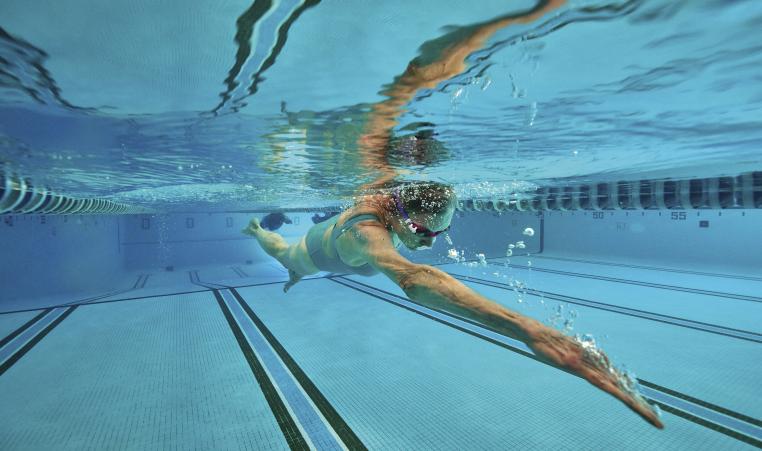
In the United States, someone dies from drowning every 10 minutes. One out of every five drowning victims is a child, and for every child who drowns, another five children get treated for injuries related to being submerged in water.
At the YMCA, we observe National Water Safety Month each May, where we equip kids and parents with essential water safety skills, protect them, and set them up for a safe and enjoyable swimming experience every time.
Water Safety Tips
Water safety encompasses a person's behavior in and around the water. Before taking your kids to the pool, beach, or lakeshore, teach them these safety tips to ensure a safe and pleasant water experience.
1. Never Swim Alone
Swimming should only happen when a lifeguard is on duty. Lifeguards don't just watch the people in the pool, lake, or ocean. Their job is also to watch the water and advise swimmers on any safety concerns and questionable conditions that might arise. They are also trained to respond quickly when something happens.
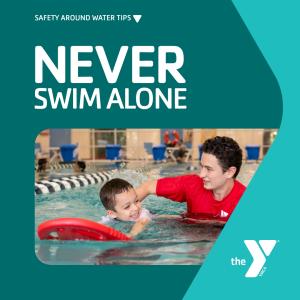
In addition to swimming with a lifeguard nearby, a good rule of thumb — for children and adults — is to use the buddy system while swimming.
2. Always Wear a Life Vest
Young children or inexperienced swimmers should always wear a Coast Guard-certified life jacket around water. Many products on the market claim to help children stay afloat, such as water wings, floaties, pool noodles, etc., but these are not a substitute for life preservers or lifesaving devices in a genuine emergency. Use these products only when a parent or trustworthy adult is within arm's length of the child's use.
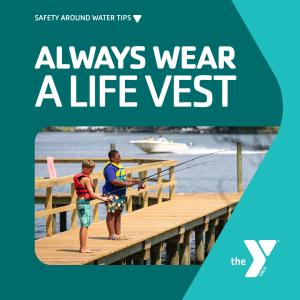
Also, remember that a life jacket or other flotation device should never be an excuse to ignore other water safety guidelines. Life jackets alone are not enough to stay safe around water.
3. Don’t Jump in the Water to Save a Friend
If a person sees their friend struggling to keep their head above water, their first instinct may be to help. However, doing so could lead to both people drowning. The Y’s Safety Around Water program recommends the “reach, throw, don’t go” technique, which involves using a long object to pull a struggling swimmer to safety.
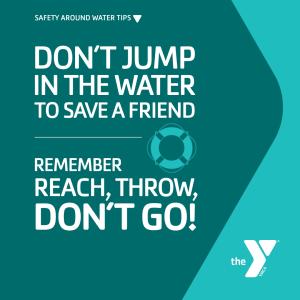
4. Stay Away From Pool Drains
It is a good idea to show your people what the pool drain looks like and explain the importance of staying clear before they even begin playing. Hair, bathing suits, and even limbs have become stuck in broken or faulty drains, which can lead to drowning or severe injury. Teach people to avoid these areas in pools, especially if a drain lacks a cover or appears otherwise broken. If you notice one that seems to be operating incorrectly, report it immediately.
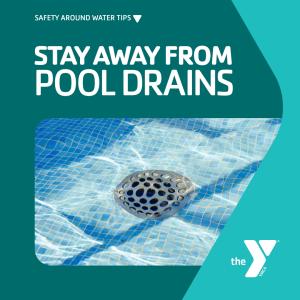
5. Stay Within Designated Swim Areas
Whether swimming in a pool, ocean, or lake, staying within the designated swim areas is vital to staying safe. Never encourage a person to swim in water deeper than their abilities will allow, and, especially if you're swimming in a lake or ocean, always follow guidelines local lifeguards have established. They are familiar with the water and, in the case of lakes and seas, know enough about how it changes from day to day to make wise and up-to-date safety recommendations.
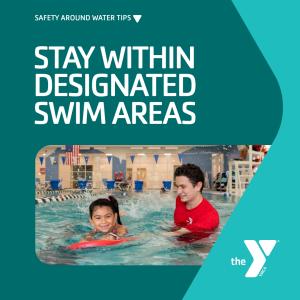
6. Call 911 For Help
Although these safety tips will help to inform children and parents on how to be safe around water, accidents happen. Know what you can do to help by following the safety tips above, and always call 911 if an emergency arises. It may be the difference between life and death.
7. Learn CPR
While we hope your family will follow all these guidelines and stay safe in the water, the unfortunate truth is that accidents happen. If a drowning incident or pool-related accident occurs, bystanders are typically the first available to react and respond. As a parent supervising children, you must be familiar with lifesaving techniques, including CPR for children and adults. Knowing how to perform CPR can be the difference between life and death. Get your CPR certification — and keep it current — through the American Red Cross, your local hospital, or other community organizations.
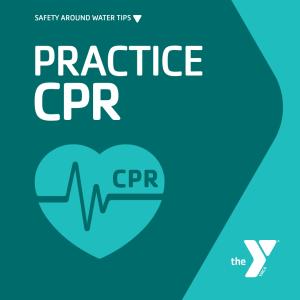
Learning how to swim also has multiple benefits beyond enjoying the water safely. It helps people strive for physical achievement, promotes healthy living, and builds confidence. And, honestly, it's just plain fun. Setting clear, consistent boundaries is the best way to teach your family to achieve all these goals. By following these essential water safety tips, you are significantly reducing the risks associated with swimming, which allows your whole family to enjoy themselves even more.
One of the most exciting advantages of the swim lessons at the YMCA is that we also offer classes for teens and adults. It's always possible to learn how to swim safely, and our highly trained and experienced instructors are dedicated to helping you overcome your fear of the water and become the safest swimmer you can be.
Don't wait another day! Contact your local YMCA to see what options are available for your family.